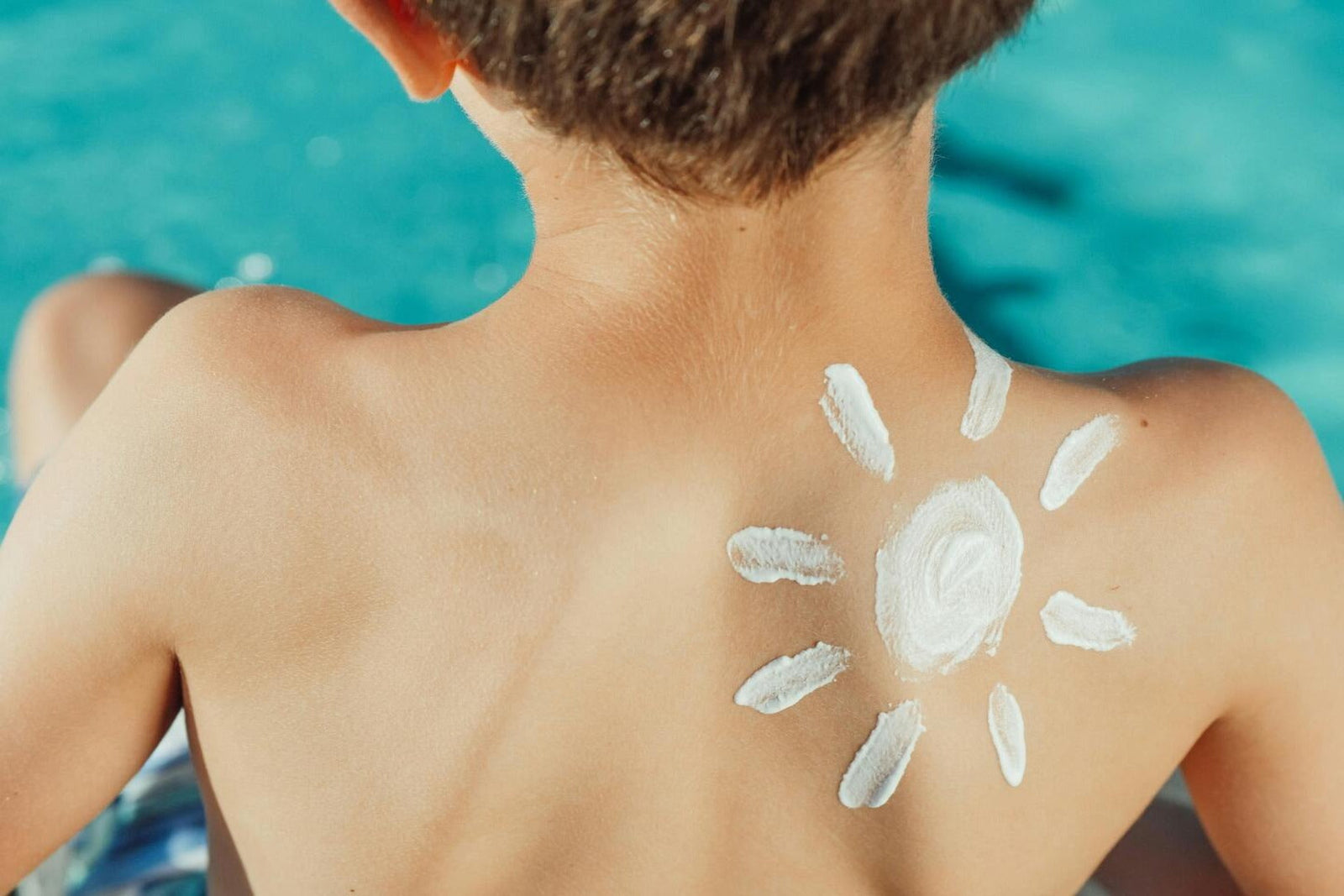The Ultimate Guide to Choosing the Best Sunscreen for Kids

Australia is known for its harsh sun, with some of the highest UV levels in the world. That makes sunscreen an essential part of every child’s daily routine, whether they’re playing at the park, swimming at the beach, or simply heading to school. However, with so many options available, how do you choose the best sunscreen for your little one?
In this guide, we’ll break down everything you need to know, including the differences between natural vs. chemical sunscreens, the biggest sunscreen mistakes parents make, and whether expensive sunscreens are actually worth it. Let’s dive in!
1. Natural vs. Chemical Sunscreens: What’s Best for Your Child?
When choosing a sunscreen, you’ll notice that products are often classified as chemical (synthetic) or natural (mineral). But what’s the difference, and which one is better for kids?
Chemical Sunscreens
Chemical sunscreens absorb into the skin and use active ingredients like oxybenzone, avobenzone, octinoxate, and homosalate to absorb UV radiation before it can damage the skin. They are generally lightweight, non-greasy, and easy to apply.
Pros:
-
Lightweight and easy to rub in
-
Provides broad-spectrum protection
-
Water-resistant formulas available
Cons:
-
Can cause irritation in kids with sensitive skin
-
Some ingredients (like oxybenzone) have been linked to hormone disruption and are banned in certain regions
-
Requires time to absorb into the skin before becoming effective (usually 15-30 minutes)
Natural (Mineral) Sunscreens
Natural sunscreens, also called physical or mineral sunscreens, use zinc oxide or titanium dioxide to create a protective barrier that reflects UV rays off the skin.
Pros:
-
Gentle on sensitive skin
-
Starts working immediately upon application
-
Safer for babies and young children
-
Eco-friendly and reef-safe
Cons:
-
Can leave a white cast on the skin
-
Sometimes thicker and harder to rub in
-
May require more frequent reapplication
Which One is Best for Kids? For babies and children with sensitive skin, mineral sunscreens are often the safest choice since they don’t contain harsh chemicals. However, if your child prefers a lighter formula or will be swimming a lot, a broad-spectrum chemical sunscreen (without oxybenzone) can still be a good option. The key is to check the ingredient list and choose one that’s safe and effective.
2. The Sunscreen Mistakes Every Parent Should Avoid
Even if you pick the best sunscreen, it won’t help much if you’re not applying it correctly! Here are some common sunscreen mistakes and how to avoid them.
-
Not Applying Enough Sunscreen
Most parents don’t apply enough sunscreen to fully protect their child’s skin.
✅ Fix it: Use the “teaspoon rule” – one teaspoon for the face and neck, one for each arm, one for each leg, and one for the front and back of the torso. For full-body coverage, that’s at least 30mL (about a shot glass worth) per application.
-
Applying Sunscreen Too Late
Chemical sunscreens need time to absorb into the skin before they start working.
✅ Fix it: Apply sunscreen at least 15-30 minutes before heading outside. If you’re using a mineral sunscreen, it works immediately, but it’s still a good habit to apply before leaving home.
-
Forgetting to Reapply
One application in the morning isn’t enough to last all day, especially if your child is swimming or sweating.
✅ Fix it: Reapply sunscreen every two hours and immediately after swimming or excessive sweating.
-
Ignoring Hidden Sun Exposure
Many parents apply sunscreen only when it’s sunny, but UV rays penetrate through clouds and even car windows.
✅ Fix it: Make sunscreen a daily habit, even on cloudy days.
-
Relying Only on Sunscreen
Sunscreen is important, but it’s not the only form of sun protection.
✅ Fix it: Combine sunscreen with sun-protective clothing (like rashies or Zippy hooded towels!), hats, sunglasses, and shade to keep your child fully protected.
3. Are Expensive Sunscreens Worth It? Budget vs. Premium Options
With prices ranging from approximately $10 to $40 per bottle, many parents wonder if high-end sunscreens are actually better than budget options. Here’s how they compare:
| Feature | Budget Sunscreens (<$15) | Mid-Range Sunscreens ($15-$25) | Premium Sunscreens ($25-$40) |
|---|---|---|---|
| SPF Protection | Usually SPF 30-50 | Usually SPF 50 | Usually SPF 50+ |
| Water Resistance | Often lower | Moderate | High |
| Texture | Can be thick and sticky | Usually lightweight | Ultra-lightweight, non-greasy |
| Ingredients | May contain oxybenzone, fragrances | Some use natural ingredients | Often reef-safe, fragrance-free, and hypoallergenic |
When to Save
-
If you need a sunscreen for occasional use (e.g., short outdoor playtime)
-
If your child has no skin sensitivities
-
If you’re looking for a cost-effective family sunscreen
When to Splurge
-
If your child has sensitive skin, eczema, or allergies, a fragrance-free, hypoallergenic formula is worth the extra cost.
-
If your child spends long hours outdoors or swimming, a premium, water-resistant sunscreen lasts longer and provides better protection.
-
If you prefer an eco-friendly and reef-safe option, high-quality mineral sunscreens tend to be pricier.
Best Budget-Friendly Picks:
-
Cancer Council Kids Sunscreen SPF 50+
-
Banana Boat Simply Protect Kids SPF 50+
-
Nivea Sun Kids Protect & Care SPF 50+
Best Premium Picks:
-
Wotnot 100% Natural Sunscreen SPF 30
-
Blue Lizard Kids Mineral Sunscreen SPF 50+
-
Little Urchin Natural Sunscreen SPF 50+
Choosing the best sunscreen for your child comes down to safety, effectiveness, and ease of use. Here’s a quick recap to help you decide:
✅ For sensitive skin? Choose a natural (mineral) sunscreen.
✅ For long swimming sessions? Go for a high SPF, water-resistant option.
✅ On a budget? Many affordable brands offer great protection without harsh chemicals
✅ Want an eco-friendly option? Look for reef-safe formulas with zinc oxide or titanium dioxide.
No matter which sunscreen you choose, proper application and reapplication are key to keeping your little one safe from harmful UV rays. And don’t forget – sunscreen works best when combined with hats, sunglasses, Zippy Kids Hooded Towels, and shade.
Now that you’re sunscreen-savvy, you can confidently protect your child’s skin while they enjoy the great Aussie outdoors! ☀️😎


Leave a comment